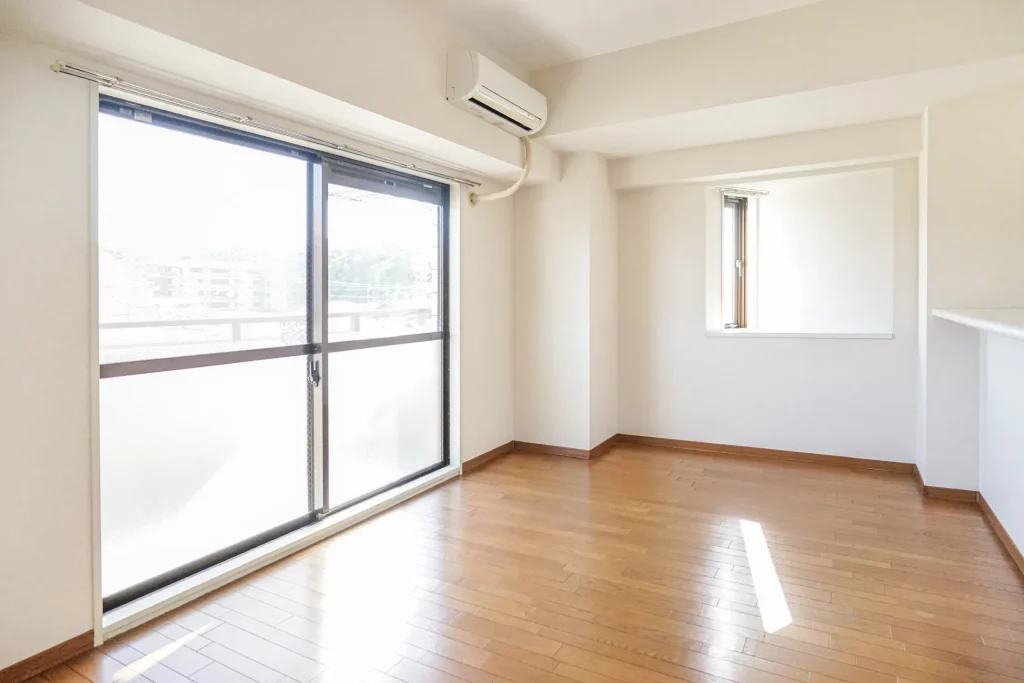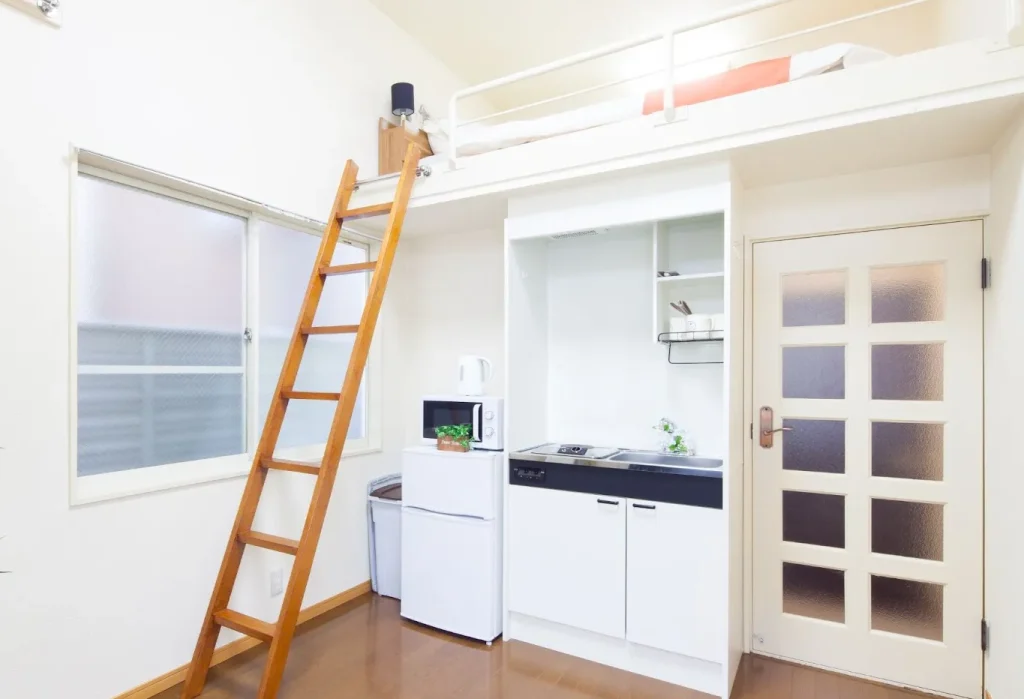What is a typical apartment in Japan like? Size, Facilities, and Rent Rates Explained

When foreigners living alone look for apartments in Japan, they may be puzzled by the differences in size and facilities from those in other countries.
In this article, we will discuss a typical Japanese apartment for single occupancy, including its size and facilities, as well as the market rate for rent. By understanding the characteristics of Japanese apartments, you will be able to find the key to finding a comfortable place to live.
▼Goandup Picks Click here for recommended articles!
- Required before studying abroad! Goandup Nihongo+, an online Japanese language learning service
- This page introduces services for foreigners who wish to study in Japan or improve their Japanese language skills to learn Japanese online.
- Goandup Salon" community for foreigners living in Japan
- We introduce an online community where foreigners living in Japan can exchange information and interact with each other to support their life in Japan.
- Goandup Study" supports foreigners who want to study in Japan.
- This section introduces study abroad support services that provide comprehensive support to foreigners who wish to study in Japan, from preparation for study abroad to living in Japan.
- Where can I buy a prepaid SIM in Japan? Recommended SIM cards for foreigners are also introduced.
- How to purchase a prepaid SIM and suitable SIM cards for foreigners.
- The Complete Guide to Pocket Wi-Fi in Japan for Foreigners!
- We introduce how to select and recommend pocket Wi-Fi products that can be used conveniently in Japan.
- The Complete Guide to Finding a Job in Japan! Finding a job, changing jobs, and part-time work for foreigners
- This site provides foreigners who want to work in Japan with comprehensive information on how to find a job, recommended job sites, and other information necessary to find a job.
Are apartments in Japan different from those in other countries?

Foreign residents who have decided to live in Japan may have various expectations and concerns. In particular, they may worry about whether they will be able to find a comfortable room to live in, as they often hear that apartments in Japan are very small.
Indeed, there are some aspects of a typical Japanese apartment that are different from those in other countries. For example, Japanese apartments are limited in size and have smaller kitchens and bathrooms. Also, many will not have beds furnished. However, if you understand these characteristics, there is no need to be concerned. In fact, you can see it as an opportunity to enjoy a compact lifestyle.
What is the size of a room for a single person living in Japan?

In Japan, apartments for people living alone are generally one-room, 1K, or 1DK apartments. A studio is one room with a kitchen inside, 1K has one room but a separate kitchen, and 1DK has a living room, kitchen, and a dining room for meals.
A typical apartment room in Japan is usually about 6 or 8 tatami mats per room. A "tatami" is a unit of measurement for one tatami mat, and is often used to describe the size of a room in Japan: 6 tatami is about 9.7 square meters (9.7square meters), and 8 tatami is about 13 square meters (13square meters). This size includes space for furniture and beds, so the actual space for human habitation is much smaller.
However, recently, an increasing number of 1K and 1DK rooms have more than 10 tatami mats. Also, renting a 1LDK or 2DK apartment with two rooms will give you a little more space. When choosing a room, it is important to find a size that suits your lifestyle.
In addition, the following article provides a detailed explanation of floor plan descriptions such as "studio," "1K," and "1DK. Although these expressions may be unique to Japan, keep them in mind as essential basic knowledge when looking at property information.
▶︎ What does "Madori" mean, including a list of terms such as R, K, S, etc. and recommended floor plans?
What is a "unit bath" in a Japanese apartment?

Bath and toilet are important points for choosing a room. There are two types of baths in Japanese apartments: "separate" and "unit bath.
Separate is a type in which the bath and toilet rooms are separate, while a unit bath is a type in which the washbasin, toilet, shower, and bathtub are combined. In a unit bath, a curtain separates the bathtub from the toilet and sink, and you shower and bathe in the bathtub.
Disadvantages of unit baths
In a regular bath, you can fill the bathtub with hot water, soak in the bathtub, and take a shower and wash yourself in the space beside it, but in a unit bath, you must shower in the bathtub and cannot fill the bathtub with hot water and soak in it at the same time.
Also, the unit bath is very small, so you may find it difficult to use until you get used to it. Since the bath and toilet are only separated by a curtain, you will inevitably get the washroom a little wet when you take a shower, which is another point of concern.
Advantages of unit baths
On the other hand, a major advantage of the unit bath is that the bath and toilet are combined, making cleaning easy. This is recommended for those who desire a compact lifestyle, as it allows for effective use of a small space. In addition, since unit-bath apartments are often inexpensive, this is also an advantage for those who are budget-conscious.
What are the typical facilities in a Japanese apartment?

For a foreigner living in a Japanese apartment for the first time, you may be wondering what facilities are available in a typical Japanese apartment. The key is to understand that a typical Japanese apartment has some amenities that most apartments have and others that are often not available.
bed
A typical Japanese apartment is often not equipped with a bed. This is because many Japanese are in the habit of sleeping on futons, and a bed is not always necessary. So, if you rent a room without a bed, you will need to either buy your own bed or get into the habit of sleeping on a futon.
However, this does not mean that some apartments are not equipped with beds. Many apartments for foreigners and shared houses have beds from the beginning. If you really want to live in an apartment with a bed, you should consult with the staff of a real estate agency.
The following article introduces share houses for foreigners. Please refer to it.
▶︎ Japanese Sharehouse Experience! 3 Recommended Share Houses & Guide for Foreigners on How to Choose a Share House
washing machine (laundry)
Some rooms are equipped with a washing machine from the beginning, while others are not. Even if a room is not equipped with a washing machine, you may be able to use it if the previous occupant left it behind. In such cases, you may have to buy a new washing machine yourself.
If you are going to provide your own washing machine, you need to consider the space available in your room. Recently, small and compact washing machines are available, so it is recommended to choose those. It is also a good idea to check if there is a laundromat in your neighborhood.
The following article explains about laundromats in Japan. Please refer to it.
▶︎ How to use a laundromat in Japan? Necessary belongings and price rates are also explained.
balcony
Typical Japanese apartments often have a small veranda where you can dry your laundry. However, this is not always the case, so please check if you need a balcony.
Because balconies in Japanese apartments are very small, it is often difficult to grow plants or relax on them. It is best to think of it as a place to hang laundry to dry. However, the view from the balcony and the feeling of being outside is one of its charms.
Stove / Air conditioner
Most typical Japanese apartments are equipped with air conditioning. This will come in handy as a measure against the heat in the summer and for heating in the winter. On the other hand, most apartments are not equipped with a stove, so if you want to use one, you will need to provide your own.
However, some rooms in colder regions, such as Hokkaido and Tohoku, do not have air conditioners because they are cool in summer and do not require air conditioning, while winters are very cold and stoves are often used. It is recommended that you consider the preparation of heating equipment according to the climate of the area where you live.
kitchen
Most apartments in Japan have kitchens, unless they are very inexpensive. However, the typical kitchen in a Japanese apartment is very small, often with only one or two stoves and a small sink.
It may be difficult to cook a full-scale meal, but simple cooking is not a problem. The key is to have the necessary cooking utensils and to make good use of the space. Large appliances such as refrigerators need to be the right size to fit in the room. The kitchen area is an important facility that directly affects the ease of living, so it is recommended to check it carefully before making a decision.
What is the rent rate for apartments in Japan?

There are many different types of apartments throughout Japan, but rents vary widely from area to area. In general, rents tend to be higher in central Tokyo and more popular areas. Let's look at rent rates in major cities, focusing on apartments for single people.
Please also refer to the following articles for more information on rent prices nationwide.
▶︎ Which prefectures have the cheapest rent in Japan? Compare rent prices by region
1. rent rates for apartments for single people in Tokyo
Tokyo is one of the most expensive cities in Japan, and rents are among the highest in the country. The standard apartment rent in Tokyo's 23 wards is 60,000-80,000 yen for a studio, 70,000-90,000 yen for a 1K, and 80,000-100,000 yen for a 1DK. In popular areas, rents can be 10,000 to 20,000 yen higher.
For example, in Shibuya and Shinjuku wards, which are popular among young people, the market price is 80,000-100,000 yen for a studio and 90,000-110,000 yen for a 1K room. On the other hand, in areas slightly removed from the city center, such as Nerima and Adachi wards, you can rent a studio for 50,000 to 70,000 yen and 1K for 60,000 to 80,000 yen.
In the Tama area, located in the suburbs of Tokyo, rents are much lower. For an apartment within walking distance of the nearest station, the standard rent for a one-room apartment is 40,000-60,000 yen, and 50,000-70,000 yen for a 1K apartment. Access to the city center may be somewhat inconvenient, but the rent will be lower.
2. Rent rates for apartments for single people in Osaka
The market rent for apartments in Osaka City ranges from 40,000 to 60,000 yen for a studio, 50,000 to 70,000 yen for a 1K, and 60,000 to 80,000 yen for a 1DK. In popular areas such as Umeda, Shinsaibashi, and Namba, the rent is 10,000 to 20,000 yen higher.
However, in Osaka, there is a large difference in rent between wards within the city. For example, rent is relatively inexpensive in Fukushima and Nishi wards, where you can find one-room apartments in the 30,000-50,000 yen range. On the other hand, Kita and Chuo wards are popular areas, so rents tend to be 10,000 to 20,000 yen higher for the same size.
In satellite cities outside Osaka, rents are even lower than in the city. For example, apartments in Sakai City, Takatsuki City, and Ibaraki City, which are major cities in Osaka, can be rented for 30,000 to 40,000 yen for a studio and 40,000 to 50,000 yen for a 1K apartment. Since access to Osaka City is only a 30-minute train ride away, many of these areas will be convenient for commuting to work or school.
3. rent rates for apartments for single people in Nagoya
The market rent for apartments in Nagoya City ranges from 40,000 to 50,000 yen for a studio, 50,000 to 60,000 yen for a 1K, and 60,000 to 70,000 yen for a 1DK. Rent tends to be about 10,000 yen higher in areas near downtown areas such as Sakae and Fushimi.
In Nagoya, there is not much difference in rent between areas within the city. However, the area around Meieki Station is more convenient, so rents are slightly more expensive. The standard rent for a studio is 50,000-70,000 yen, and 60,000-80,000 yen for a 1K room.
When you move slightly away from the center of the city, rents drop dramatically. For example, in areas along the Nagoya Municipal Subway lines, such as Showa, Mizuho, and Tenpaku wards, you can find many one-room apartments in the 30,000-40,000 yen range and 1K apartments in the 40,000-50,000 yen range. Access to the city center is only about 20 minutes by subway, making it convenient for commuting to work or school.
Useful information and support for living in Japan

Living in Japan is fascinating, but it is not uncommon to face many challenges due to language barriers and cultural differences. For example, you may encounter difficulties in all aspects of life, from using keigo (honorific expressions) in everyday and business situations, to difficulties in finding housing, using public services, preparing for the JLPT exam, and even meeting new friends and loved ones.
At such times, Goandup Salon will be your reliable partner!
Our community provides support and information to help foreign residents in Japan to make their life in Japan richer and more comfortable.
- Japanese Language Studywill meet the needs of all levels, from daily conversation to the use of keigo in business situations, to efficient Japanese language learning methods and preparation for the JLPT exam.
- livingaspect of the program provides concrete advice and information on how to establish a foundation for living in Japan, including explanations of Japanese culture and rules, finding housing, and how to contract public services and living infrastructure.
- Jobs & CareersRegarding the "what if" section, we can help you find a job, change jobs, and understand Japanese business etiquette and workplace culture, which are key to a successful career in the workplace.
- Travel & Dining Guidewill introduce you to hidden gems in Japan, must-try gourmet information, and other unique local attractions to help you experience Japan more deeply.
If you have any questions or concerns about life in Japan, Goandup Salon is here to help you! We will wholeheartedly support you to make your life in Japan smoother and more enjoyable.
For more information, click here ▼
summary
Typical Japanese apartments often do not come with a bed, and there are two types of baths: separate and unit baths. In addition, rent prices vary greatly depending on the area.
Japanese apartments differ from their foreign counterparts in many ways, and understanding their characteristics is the first step in finding a comfortable home. Find the apartment that best fits your needs by keeping in mind important points such as floor plans, facilities, and rent rates.
And while many people may feel that Japanese apartments are small, there are actually many advantages to small apartments. If you would like to know tips on how to use a small apartment in a spacious way and interior design recommendations, please check out the following articles!
▶︎ What are the advantages of a small apartment in Japan? How to use it spaciously and its interior design are also introduced!






